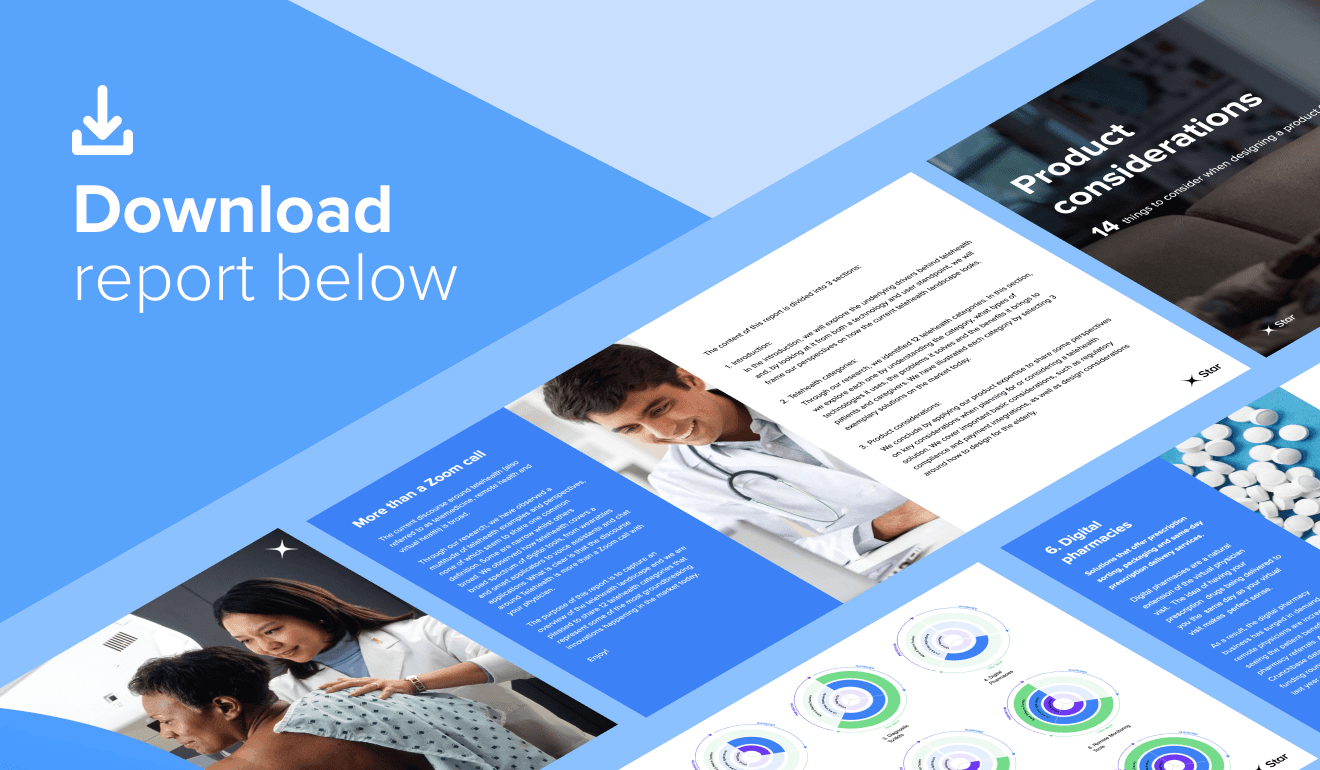After conducting extensive research, we are ready to publish our findings in a report titled, "Mapping the telehealth landscape". In this report, we introduce 12 crucial telehealth categories that are shaping the future of the healthcare ecosystem.
Reducing the burden on healthcare institutions
Our research discovered that there is a shared purpose fueling the development of telehealth solutions, mainly the desire to relieve the growing burden on healthcare services. The ongoing coronavirus pandemic has accelerated this growth, and the ability of telehealth platforms to provide contact-free care makes these services even more valuable to the healthcare industry.
More than a Zoom call
What is clear is that telehealth services today are much more than video conferencing with a physician. In fact, our report highlights 36 different examples of how telehealth providers are using a variety of technologies, including ‘virtual caregivers’, active & passive trackers, and voice assistants, to provide an effective remote care experience.
Telehealth products for the entire patient journey
As we mapped the wide range of telehealth services, we also noticed a pattern forming. We identified 12 main solution categories, spanning the breadth of the patient treatment journey, from prevention to diagnosis to treatment. Some tools cover the entire journey, others just focus on specific stages within the journey.
We are only highlighting 4 solution categories in this introduction. The report contains 8 more crucial classifications. Each segment identifies problems it solves, benefits for different users, and telehealth product examples:
- Triage tools: This is a rapidly developing market that makes use of a wide range of technologies, from quizzes and chatbots to web applications, and from independent tools to large telehealth platforms. Many products also make use of AI and ML technologies. These solutions provide support for frontline medical advice and can go a long way in reducing the strain on primary healthcare systems.
- Digital biomarkers: This category uses digital tools to collect physiological and behavioral measurements. Sensors and algorithms collect information via hardware and software tools. Digital biomarkers can address the lack of real-world data during treatment and clinical trials, as they can help researchers effectively collect, structure, and analyze large amounts of biometric data.
- Remote monitoring tools: These tools help patients self-manage a condition and caregivers remotely monitor patients. Healthcare professionals can use these tools to monitor and coach patients through a prescribed treatment plan for a chronic disease or a behavioral condition. Remote monitoring solutions can hopefully empower patients to self-manage chronic conditions and increase patient adherence to treatment plans.
- Digital pharmacies: This category contains solutions that offer prescription sorting, packaging, and same-day prescription delivery services. Studies indicate that patients who receive regular prescription deliveries display 74% medication adherence. Those who use a traditional pharmacy demonstrate on average a 47% adherence to medication protocols. Also, digital pharmacies have lower prescription rates compared to traditional drugstores.

Designing telehealth products
To conclude our in-depth examination of the telehealth landscape, we have compiled a list of 12 product considerations to keep in mind when developing patient-centric telehealth tools or services. We believe that capabilities and features such as accessibility, interoperability and personalization are critical to securing end-user adoption. The importance of building trust in the privacy, efficacy and accuracy of the telehealth service and the healthcare providers who use it is also a critical element to consider.



